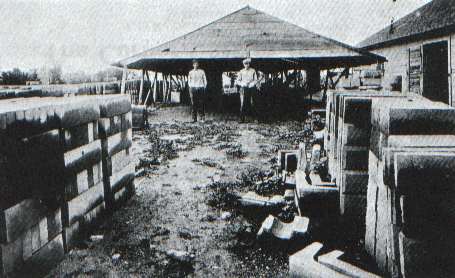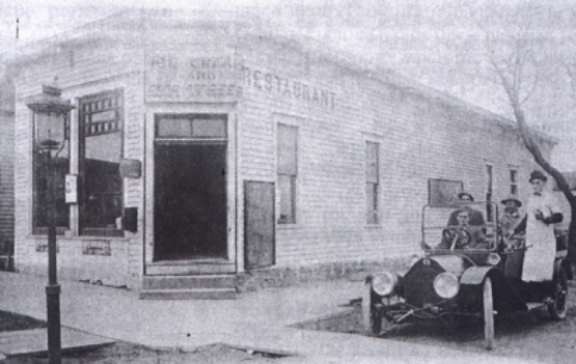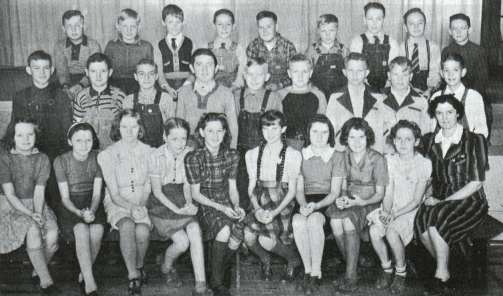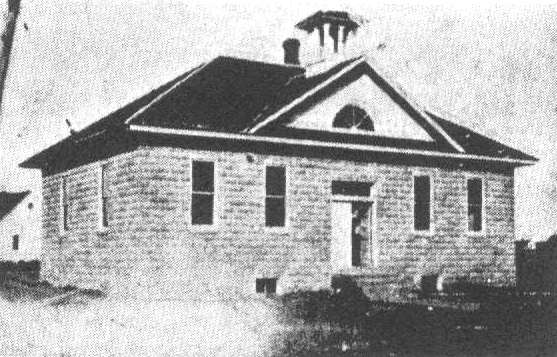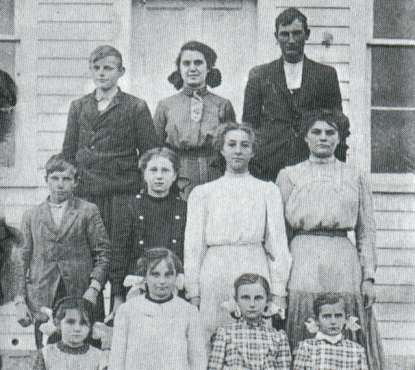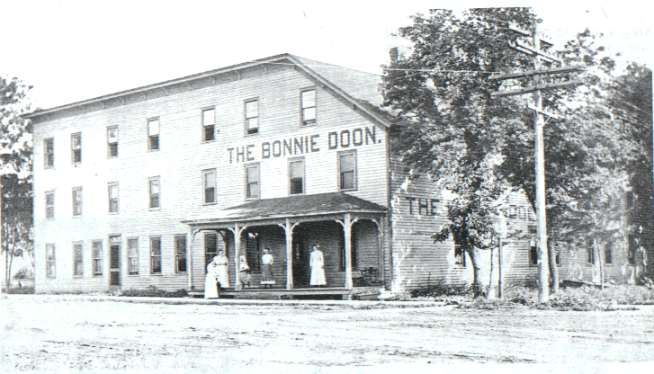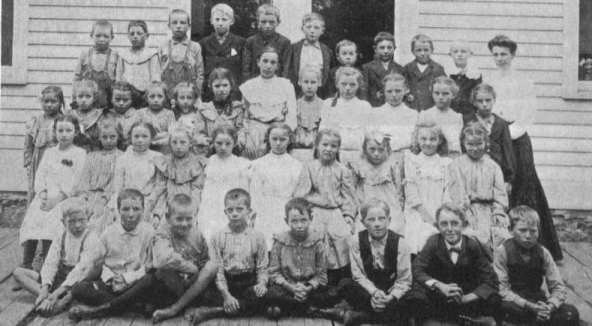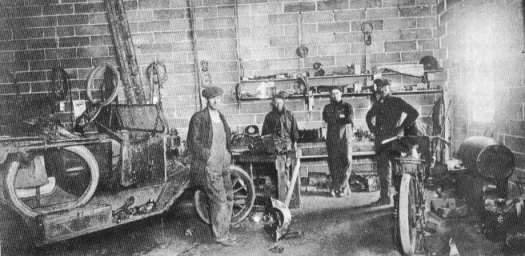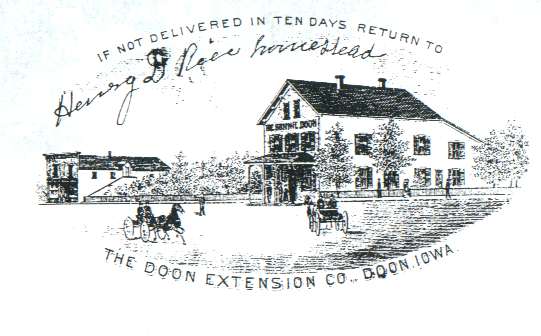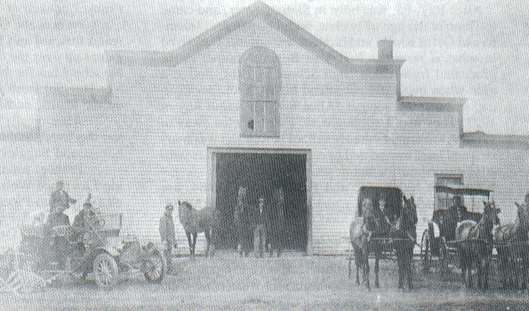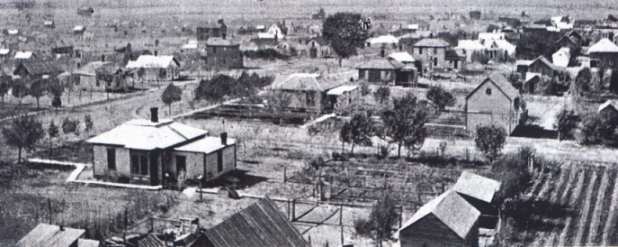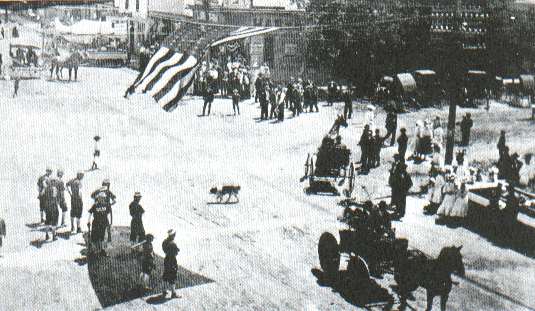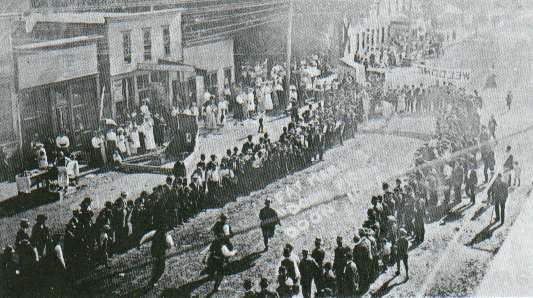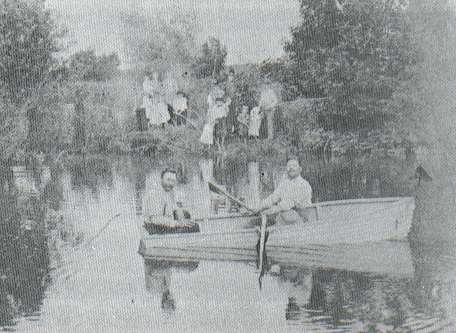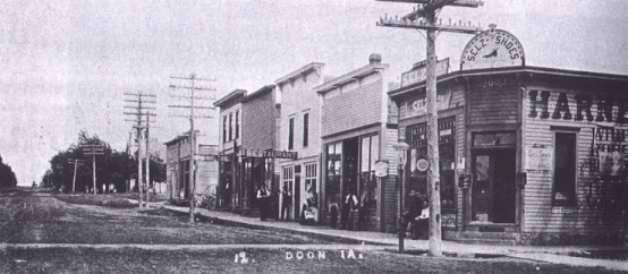History of Doon, Iowa
All through the ages rivers and waterways seemed to pioneer the development of unexplored areas. So it was that Doon became the first permanent settlement on the Big Rock river in Lyon County, Iowa.
The settlement of Doon centers around one illustrious pioneer, Mr. H.D. Rice. H.D. Rice of Petersen in Clay County, Iowa, heard wonderful tales of Lyon County, and proceeded in May of 1868 to explore the Rock River region. He was charmed with the beauty of the place where now stands the town of Doon, and returned to the site in July of the same year with his friend, L.F. Knight. Upon reaching the forks of the Little Rock, Big Rock and West Branch streams, they built a cabin and thereby started the first permanent settlement in the county.
Rice returned for his family, and while he was gone, Knight penned his thoughts in the following lines:
“Sitting in solitude on the band of this beautiful stream, far removed from all humanity, with naught but the song of the wild birds or the soft murmur of the waterfall to break the silence of this green, glad, solitude, I cannot help but recall those touching words of Robert Burns’ beginning,
‘Ye banks and braes O’Bonnie Doon,
How can ye bloom sae fresh and fair:
How can yet chant ye little birds?
And I sae weary, fu’ O’ care!”
And this the town received its name, “Bonnie Doon.”
Rice proceeded to build a more permanent home and this became the first frame building in the area. (1869). This building later became a crossroads stopover, and when the area was connected with the outside area by virtue of the stageline established between LeMars, Doon, and Luverne, Minnesota in 1871–he developed the building into a hotel. This building still stands in the town of Doon. It was removed from its old location near the southwest corner of Doon and is now the residence of Jim Hoogendoorn. Rice later erected a fine hotel in the business district of Doon. The “Bonnie Doon”, as it was called, contained 54 rooms, and for many years was the stop over of many an agent, salesman, or adventurer.
Doon does not have the familiar stories of the heroic struggles with the Indians in the pages of its history. The Sioux Indians had finally vacated northwest Iowa and the Yanktons, if there were any, were friendly. The Sioux Indians left evidence of long occupation, the most prominent being the burial grounds overlooking Doon from the west, near the site of the present cemetery.
From a handful of hardy settlers in 1869, Doon grew to be a thriving town of 600 citizens by 1897. The first store in Doon, and the first Post Office in Lyon County were established here in 1871.Settlement came to a standstill in the grasshopper and depression era from 1873 to 1885 and immigrants passed up the high priced (% an acre) land in Lyon County and dusted themselves in the Dakotas. Many, of course, soon came back. Another reason for the slow down in settlement was that only 20,000 of the country’s 400,000 acres were subject to homestead rights. The rest had been given away to the railroads and gobbled up by speculators including Governor Larabee, who owned half of one township.
Railroads played a big part in the development of the town, just as they had made, or ruined, many others. The Chicago, St. Paul, Minneapolis, and Omaha (Northwestern line) established a branch line from Luverne to Doon in 1879. Doon, being the southern terminal of the line, a large roundhouse was established here.
Prosperity, however, was to be short lived. When the Northwestern Railroad began its program of retrenchments during the depression years of the 1930’s it started with the retirement of its “curious branch from Luverne, Minnesota to Doon, Iowa in 1934.”The Great Northern, or Sioux City and Northern, as it was called in its infancy, reached Doon in the year 1889. After thriving for a number of decades its passenger service began dropping off and by 1950 was discontinued. The Great Northern’s freights are still rolling, however, and doing a thriving business.
With the coming of the Sioux City and Northern, business soon picked up. Doon sprang from a hamlet of six houses and a school, to a prosperous town in a short time. The town was incorporated June 29, 1982 with H.D. Rice as its first mayor. It’s phenomenal growth is recorded by F.A. Scott in the July 18, 1897 issue of the Lyon County Press: “and here we are today, 1897 and we can boast of a fine town of about 600 population, with a flour mill, six elevators, a creamery, three churches, (Baptist, Congregational and Catholic), a new school, 50 room hotel, 2 banks, 3 doctors, 2 millinery shops and a host of others.”
This prosperity continued unabated through World War 1 with the help of such prices as these, recorded in the Dec. 1917 edition of THE DOON PRESS
Oats, .68-69
Wheat, 1.96-2.05
Corn, 1.00-125
Hogs, 16.00-16.50
Eggs, .40
Butter, .40-.45
The stock market crash of 1929 and the depression that followed soon had Doon on the skids, and to add to their woes, the town suffered a damaging $25,000 fire on May 16, 1934. It was a big setback to the town, but by December of the same year, much reconstruction had been done including a fine new elevator built by the Quaker Oats Company.
In the 1930 depression era, local farmers formed the “Holiday Movement,” with the focal point of the organization at LeMars. Farmers thought if the banks could take a holiday and bide for time, they could also take a holiday from bringing their livestock and produce to market. This was the first time a boycott was used to apply pressure for better farm prices. It did bring them new farm legislation in the Roosevelt (F.D.) Years.
While the farmer was trying hard at agrarian reform others were concerned with the current problems of the day such as temperance and Women’s Suffrage. The local Temperance Union, organized in the 1880’s met free of charge in the Congregational Church. Its workers were full of zeal and had regular meetings and conventions.
Recreation seems to tell the story of a changing town more so than any other item. The kind of current entertainment could almost reveal the temperament of the times. So it was in the “Gay Nineties” that the recreation was gay indeed. Issues of 1890 newspapers were full of hot baseball rivalries, grand social balls, old settlers picnics, and Chautauquas.
In the roaring twenties and consequent thirties, the pace of living picked up a bit, but there was always time for recreation. Sunday School Picnics, basket socials, sleigh rides, skating and sliding parties, tennis matches, “The old swimmin’ hole”, band concerts, social balls, games of Run-Sheep-Run, ball games, and a lot of other seemingly endless entertainment.After World War 11 much of this spontaneous fun has disappeared, to be replaced by such commercialized pastimes as bowling, television, hi-fi-, etc., it would seem that recreation must be provided rather than invented.
Whether to seek recreation (or work) elsewhere for other reasons, Doon’s population declined slowly through the thirties and forties. Perhaps the depression, World War 11, changes in farm structure, mechanization, etc. all had a part. The decline of the small town seems to have been in this period pretty much universal throughout our general area.
However, due to the tenacity of our good farmers of the Doon area and our enterprising business people, plus the advent of social security, veterans pensions, Medicare, feed grain programs and other generosities of our federal government, Doon is again experiencing growing pains. Many older people have decided to retire in our fair town, and its reasonable rents, low cost houses and comfortable atmosphere have lured many young couples, plus various new businesses.
Perhaps another historical society might complete itself and Doon can regain it prominence of the “Gay Nineties.”

